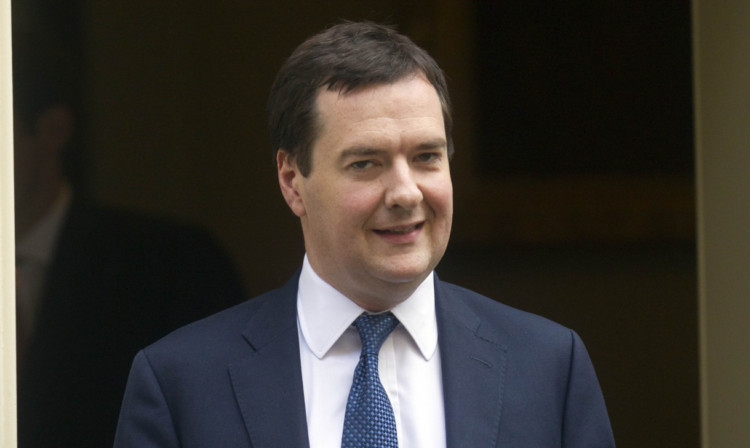Scottish taxes would increase substantially or public services would have to be cut to create a Norwegian-style oil fund in the event of independence, according to the UK Government.
A Treasury analysis paper, published by Chancellor George Osborne, warns that plans for an oil fund on day one of independence would lead to £12.5 million cuts, implying 19% lower public spending or 27% higher onshore taxes.
Recognising this approach would be “difficult to imagine”, the paper calculates that a fund started in 2021-22 would run to about 10% of Scottish GDP, which is about £20 billion at current prices, within a decade. This would rise to £32 billion, or 13% of GDP, by 2040-41.
“On the face of it, the total size of the fund may appear large,” the document states. “But, put in context, it is in fact unlikely that an oil fund would be large enough (to) meet any of the needs of an independent state.”
The Scottish Government proposes to establish an oil fund “when fiscal conditions allow”.
Scottish finance secretary John Swinney said the Treasury paper actually showed “there is no doubt Scotland can not only afford to be an independent country but has the means to thrive” after independence.
The Treasury also criticised the Scottish Government’s claim there is as much as £1.5 trillion worth of recoverable oil and gas remaining under the North Sea.
The figure, quoted by First Minister Alex Salmond, assumes reserves are in line with the most optimistic scenario and that oil and gas can be extracted “costlessly”, the paper states.
Extraction could cost about £1 trillion, according to the Treasury.
The difficulty of reaching the remaining oil reserves was highlighted by Mr Osborne in a speech at the Offshore Europe conference in Aberdeen.
“The fact is that the oil and gas remaining in the UK continental shelf will be increasingly difficult and more expensive to extract,” he said.
“You know well that the big strikes are fewer and farther between. The opportunities are often smaller, technically challenging or both – with the oil either in deeper waters or just harder to reach and extract.”
He attempted to make the case that Scotland and its offshore industries are best run as part of the UK.
“Today all of the major tax revenues, whether it’s from oil, or retail, or consumption, or income or duties are pooled across the UK,” he said.
“This provides Scotland with secure and stable funding, the Scottish Government with budgetary predictability and Scotland’s public services with the stability to plan for the long-term.
“As part of the UK, Scotland doesn’t have to cope with the challenge of managing volatile oil revenues.
“This is no small challenge. Scottish tax revenues from oil can fluctuate from year to year from £2 billion to £12 billion. They are the most volatile tax revenues that exist.”
Conservative Mr Osborne also announced the final decommissioning deed, a contract with companies to guarantee tax relief they can expect. Worth around £20 billion over 30 years, decommissioning relief represents around 1% of UK GDP but around 12% of Scottish GDP, he said.
“It’s for the Scottish Government to explain how they would pay for that”, he argued.
However, the SNP’s Mr Swinney said: “Scotland has paid more in taxes per person in each and every one of the last 30 years than the UK as a whole and, even excluding North Sea oil, Scotland’s economic performance is worth 99% of the UK.
“In fact what HM Treasury’s paper shows very clearly is that there is no doubt Scotland can not only afford to be an independent country but has the means to thrive as an independent country.
“Scotland is a key trading partner with the rest of the UK and will continue to be after independence – even the Treasury themselves admit that their analysis is likely to overestimate any effect of the creation of a border between Scotland and the rest of the UK especially in the short term, when the reality is we will all remain within the single market.
“North Sea oil will be a bonus with up to 24 billion recoverable barrels and with a potential wholesale value of £1.5 trillion, more than half of the resources in the North Sea, by value, still to be extracted, according to industry and UK Government estimates.
“With up to 24 billion barrels remaining in the North Sea, it is clear that they will remain an important source of tax revenue, and Scotland will have opportunities to invest in an oil fund, for decades to come.
“An independent Scotland will be well placed to consolidate the Scottish Government’s record of fiscal strength. We have implemented policies to support economic growth: cutting business rates, promoting Scotland abroad, giving co-ordinated support to infrastructure and to key sectors of the economy.
“What is abundantly clear is that the impact Westminster’s economic policies are currently having on families, with mean real household incomes falling 7.2% between 2009-10 and 2011-12.”
